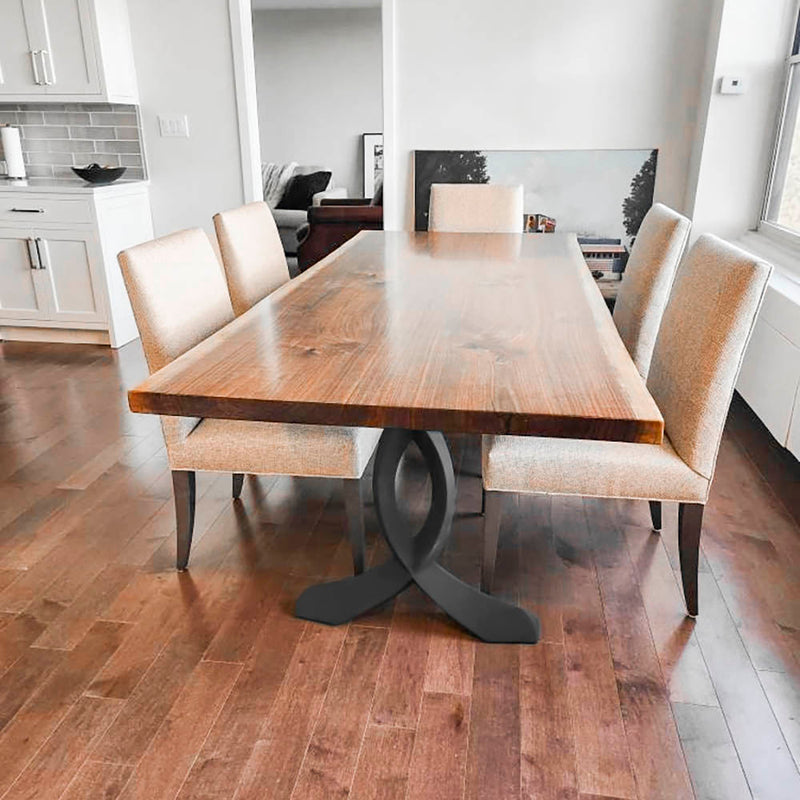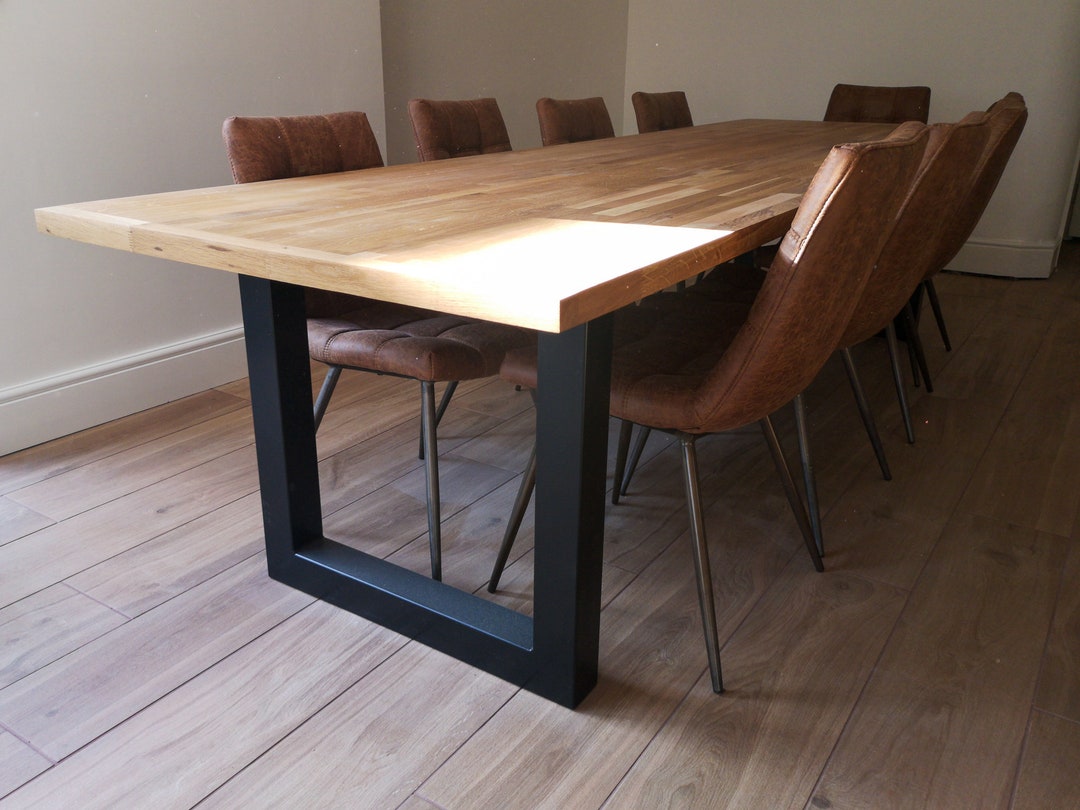From Standard to Modern: Discover the Ideal Dining-room Table Legs for Your Style
While traditional designs such as cabriole and turned legs stimulate a feeling of classic elegance, modern designs like barrette and geometric options provide an opportunity for striking visual rate of interest. As you take into consideration these elements, the concern remains: exactly how can you effortlessly incorporate these varied leg designs to produce a harmonious eating experience?
Understanding Table Leg Styles
The range of dining space table leg styles can significantly influence both the aesthetic appeals and performance of the area. Each leg style contributes distinct visual aspects and useful functions, catering to diverse design preferences and usage requirements. Understanding these designs is essential for picking the best table that straightens with your overall interior decoration vision.
For example, conical legs use a tidy, timeless appearance that can improve a room's elegance, while stand bases provide security and make the most of legroom, making them optimal for smaller rooms. Barrette legs, a characteristic of mid-century contemporary design, present an industrial style, permitting a ventilated, open feeling. Trestle legs stimulate rustic beauty, offering durable assistance and a feeling of eternity.
Wood legs can bring warmth and structure, whereas steel options commonly convey a streamlined, modern vibe. Eventually, understanding table leg designs is essential for producing a natural eating location that reflects personal style while making sure usefulness and comfort.
Typical Table Leg Options
When selecting dining space table legs, typical alternatives commonly personify classic elegance and craftsmanship. These designs show an abundant heritage and a dedication to top quality, making them ideal for those who value traditional aesthetics.
One of the most renowned typical leg styles is the cabriole leg, characterized by its graceful curved shape. This style often features decorative carvings and is most frequently found in Queen Anne and Chippendale furniture. One more prominent choice is the turned leg, which boasts a collection of smooth, rounded shapes that supply a traditional look while keeping security.
In addition, the straight leg, while basic, offers a durable and unadorned structure that can mix perfectly with a selection of tabletop designs. For those drawn to ornate detailing, claw-and-ball feet legs stimulate a feeling of splendour and can act as a spectacular prime focus in any eating area.
Lastly, pedestal bases, although not purely legs, supply an alternate typical alternative that enables sufficient legroom and can be beautifully sculpted. Each of these traditional leg styles adds to the general ambiance of an eating space, weding feature with visual appeal.

Modern Table Leg Styles
Modern table leg designs supply a diverse array of designs that highlight cutting-edge products and tidy why not check here lines. These designs usually prioritize capability while acting as striking centerpieces within an eating space. Minimalist visual appeals are widespread, with legs crafted from materials such as steel, glass, and engineered timber, which contribute to a ventilated and modern feel.
One popular design is the barrette leg, characterized by its slim, tapered framework that provides stability without overwhelming the table top (dining room table legs). This design is typically located in mid-century modern furnishings and can easily match various table shapes. One more trend is using geometric forms, where legs might take on angular or unbalanced types, including aesthetic interest and a touch of creativity

Blending Designs for Unique Spaces
Frequently, property owners seek to develop one-of-a-kind eating rooms that show their personal style by mixing different design components. This strategy enables the unification of diverse looks, causing an unified yet unique environment. Combining a rustic wooden table with smooth, contemporary steel legs can develop an appealing comparison that raises find more the room's total appeal.
Furthermore, incorporating vintage table legs with contemporary tabletops can evoke a feeling of background while preserving a modern-day perceptiveness. Such combinations not just showcase private preference yet likewise urge imagination, permitting house owners to curate a space that really feels both personal and welcoming.
Color plays a crucial function in this mixing procedure; selecting table legs that match or comparison with the existing color design can enhance aesthetic interest. Whitewashed legs can soften the daring of a dark table surface, producing a well balanced aesthetic.
Tips for Selecting the Right Legs
Picking the right table legs is important for achieving both performance and visual allure in your dining area. Begin by thinking about the total style of your room. Standard setups take advantage of legs that feature detailed carvings or turned styles, while modern areas might call for streamlined, minimalist styles.
Next, examine the elevation and security of the legs. dining room table legs. Common eating tables range between 28 to 30 inches in height, so make sure the legs enhance this measurement for comfort. Additionally, robust materials, such as wood or steel, can boost security and longevity
Evaluate the leg shape too-- options include straight, tapered, or pedestal designs. Straight legs provide a classic appearance, while conical legs can include a touch of sophistication. Pedestal bases give enough legroom and are ideal for smaller areas.
Final Thought
In recap, choosing the suitable dining-room table legs needs cautious consideration of both standard and contemporary designs. Traditional options such as cabriole and transformed legs use ageless beauty, while modern styles like hairpin and geometric shapes give a modern touch. By balancing leg style, height, and material with the overall decor, a natural and inviting atmosphere can be attained. Inevitably, the chosen table legs ought to mirror the wanted aesthetic, enhancing the dining experience within the space.
The range of eating space table leg styles can dramatically influence both the appearances and performance of the room. Eventually, comprehending table leg styles is essential for developing a cohesive eating location that reflects personal style while making sure practicality and convenience.One of the most renowned conventional leg designs is the cabriole leg, defined by its elegant curved form. Straight legs supply a traditional appearance, while conical legs can add a touch of style.In summary, picking the excellent dining space from this source table legs calls for mindful consideration of both standard and contemporary designs.